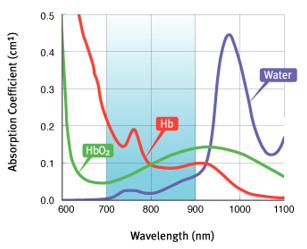The Near-infrared optical brain imaging system is an optical imaging system for capturing brain behavioral functions. It uses safe near-infrared light to measure oxyhemoglobin and deoxyhemoglobin in the cerebral cortex.
Functional near-infrared spectroscopy (fNIRS) is a non-invasive means of detecting cerebral cortical function. It detects the change of the absorbed light signal, which corresponds to the area where the brain complement is excited. The change in the optical signal (time range greater than 100 ms) is due to changes in the oxygen and deoxygenated hemoglobin concentrations at this location. Time-dependent optical signals (EROS) are detected by detecting the scattering of the subsequent excitation of the diffuse signal. This change (time range less than 100 ms) is caused by changes in the shape of the glial and neuronal or diaphragm optical properties.

Generally, laser diodes are used to emit 690 nm and 830 nm wavelengths, which are transmitted to the human head through optical fiber paths. Once the light path enters the tissue, the near-infrared light is absorbed very weakly, but it will be greatly scattered by the heterogeneity of the tissue. A small portion of the light will be reflected off the tissue and sent to the detector through the fiber collection detector for data analysis. Near-infrared fiber optical is fixed by a designed headgear for different situations such as adults and children. For adult applications, up to 128 transmit fibers and up to 64 receive fiber optic detector bundles can be placed on the adult head.
In addition to its application in drug development and medical research, functional near-infrared light brain imaging systems can be applied to many subject areas, including basic research, information science research, and educational psychology research.

Nanjing Hecho Technology Co., Ltd. has more than ten years of experience in the production of near-infrared brain imaging fiber cables. It uses imported glass fiber with high transmission rate from Schott SCHOTT. The fiber bundle has high transmittance, long service time and high bending. With the advantages of high flexibility and light weight, it provides 90-degree elbow L-shaped fiber and straight-through fiber bundle of various specifications and lengths. It has been provided to many functional brain imaging fNIRS equipment manufacturers and research institutes at home and abroad. Customization of infrared fiber bundles and services such as fiber modification and fiber repair.